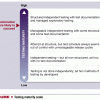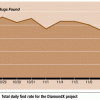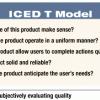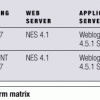|
Distributed Teams The world may be getting smaller, but managing far-flung workgroups can still be a big challenge. Here are some common barriers to coordinating distributed teams, and some guidelines for making the most out of limited face time. |
John Suzuki
June 26, 2002 |
|
 |
Are You Ready for the Test Automation Game? Automating your testing can significantly impact your business. Here are things to consider before investing in test automation. |
|
 |
Meaningful Metrics Your numbers are solid and your graphs are works of art. Now boost your metrics' value through the roof with some simple annotations that will put all that data in context. |
Anna S. W. Allison
June 26, 2002 |
 |
Web Page Response Time 101: A primer Online sites lose billions of dollars every year due to sluggish performance speed and user bailouts. Here are four laws of Web site performance that will help you understand response times and deal with your "abandonment issues." |
Alberto Savoia
June 26, 2002 |
 |
Orthogonally Speaking: Deriving a Suitable Set of Test Cases Is your testing effort facing an impossibly wide choice of test parameters? Shooting in the dark can yield hit-and-miss results--and that’s just not very effective. When your testing effort faces an impossibly wide choice of test parameters, the Orthogonal Array Testing System technique can be a very useful method for deriving a suitable set of test cases. |
|
|
The Human Side of Process Improvement Interpersonal relationships can make the difference between effective and ineffective technical initiatives. Here are ways to address this frequently neglected aspect of organizational change. |
Judah Mogilensky
June 26, 2002 |
|
 |
How Good Is This Software?—A Model to Measure Subjective Data How do you really know how good your software is? Many traditional measures only look at the quantitative aspects of quality. Here's a model to measure and analyze subjective—or qualitative—data about software quality. |
Andy Roth
June 26, 2002 |
 |
Organize Your Problem Tracking System Do you have a bug database or defect tracking system? Whether you call them PRs, CRs, SPRs, or some other acronym, logging your software problems into a database rates as one of the simplest yet most effective things you can do to improve product quality. Sometimes these databases turn into the electronic equivalent of a “roach motel” trap--the bugs go in but they don’t come out! |
Barry Mirrer
June 26, 2002 |
|
Looking Under the Hood Understanding a program's inner workings, dataflows, and bug history can enable you to build more robust tests. Here are pointers on investigating a system's internal design as a tool for effective testing. |
Len DiMaggio
June 26, 2002 |
|
 |
Juggling Concurrent Releases Every day you are faced with juggling resources and attention between customer escalations, current development projects, and planning for the future. With development cycles measured in weeks, you have at least three releases for each product. Multiply that by the number of projects under your responsibility, and you have a dozen or more releases to manage simultaneously. |
Neal Reizer
June 26, 2002 |
Pages
Upcoming Events
| Apr 27 |
STAREAST Software Testing Conference in Orlando & Online |
| Jun 08 |
AI Con USA An Intelligence-Driven Future |
| Sep 21 |
STARWEST Software Testing Conference in Anaheim & Online |
| Oct 27 |
STARCANADA Software Testing Conference in Toronto |





